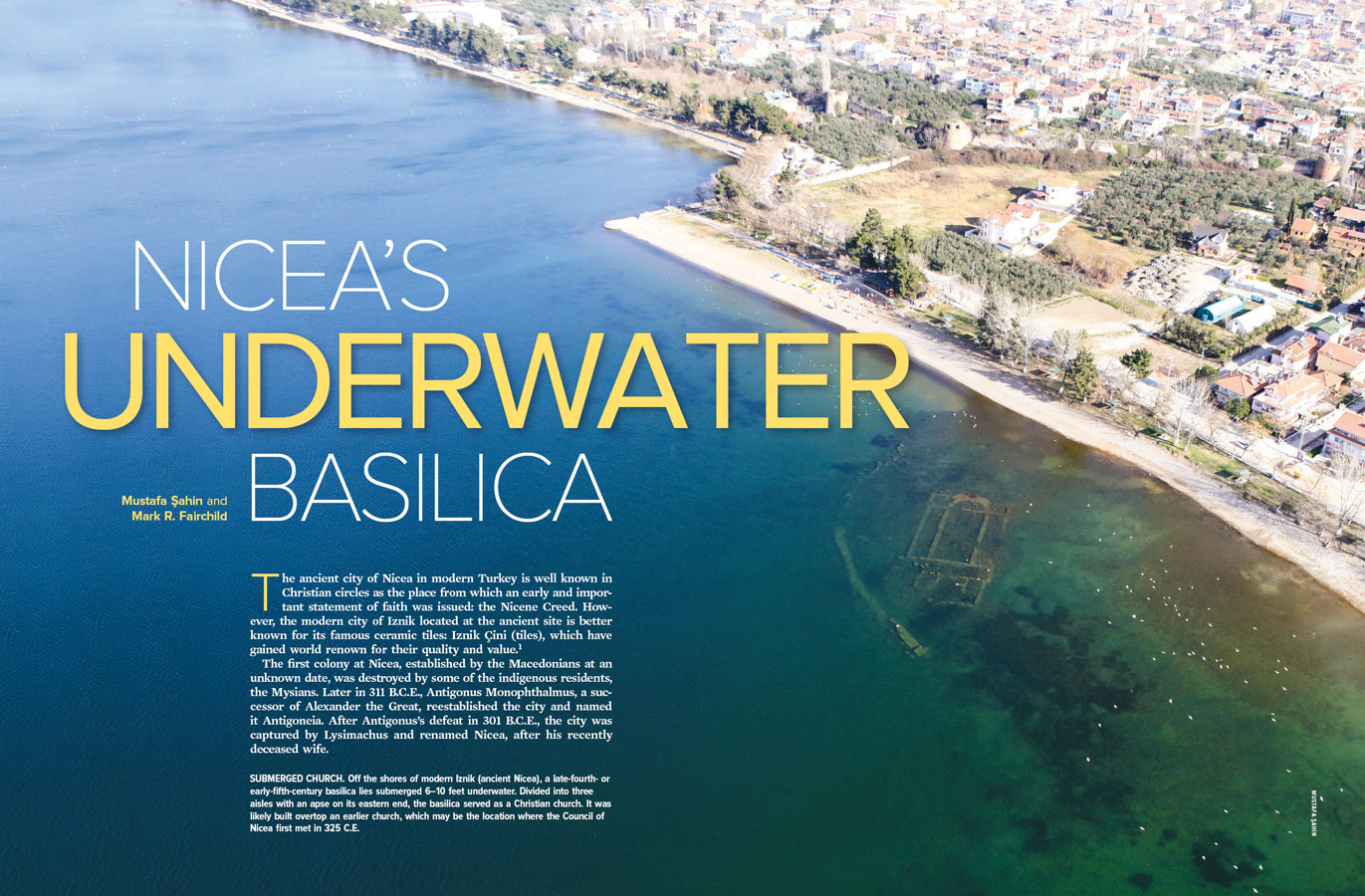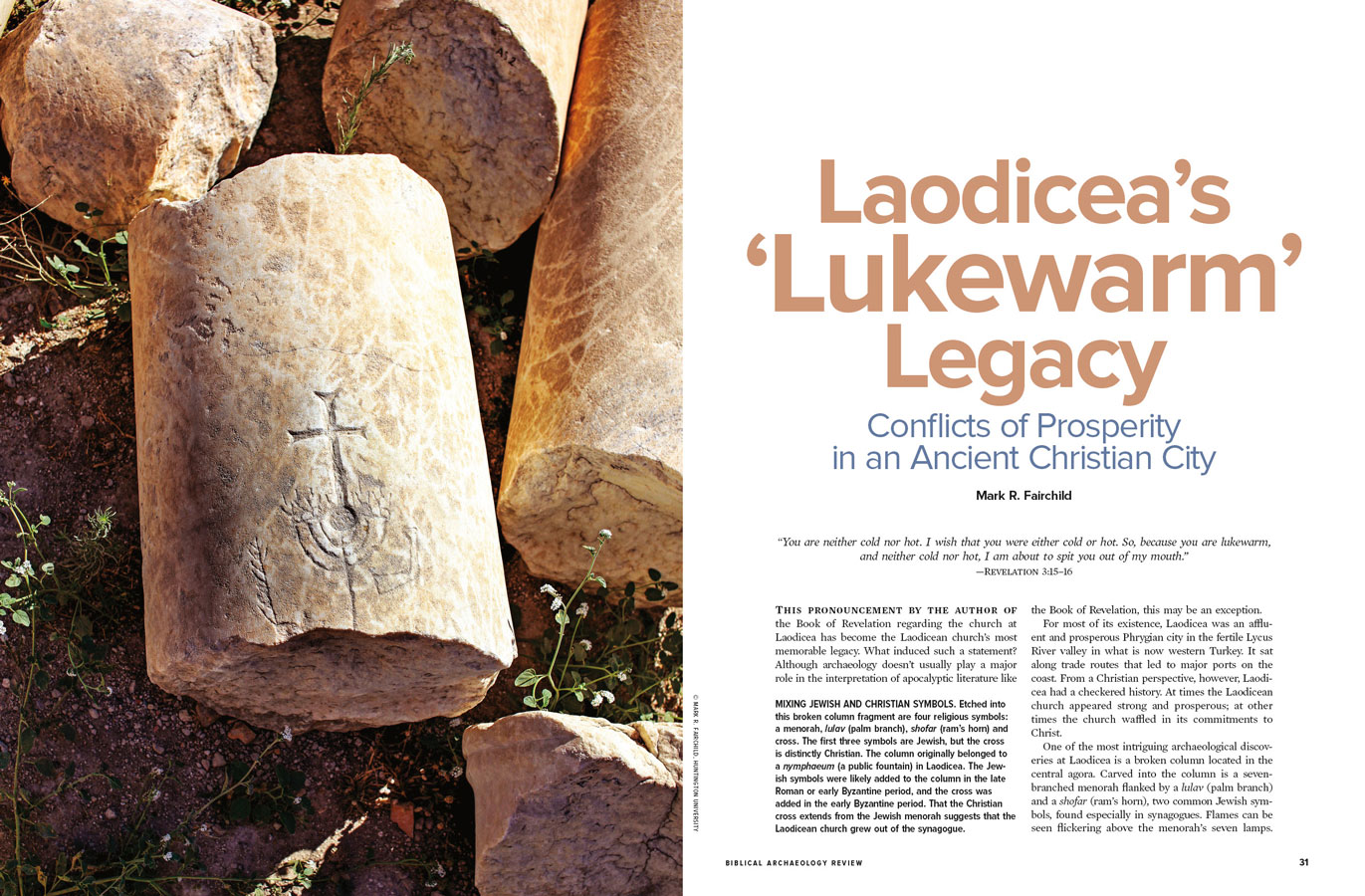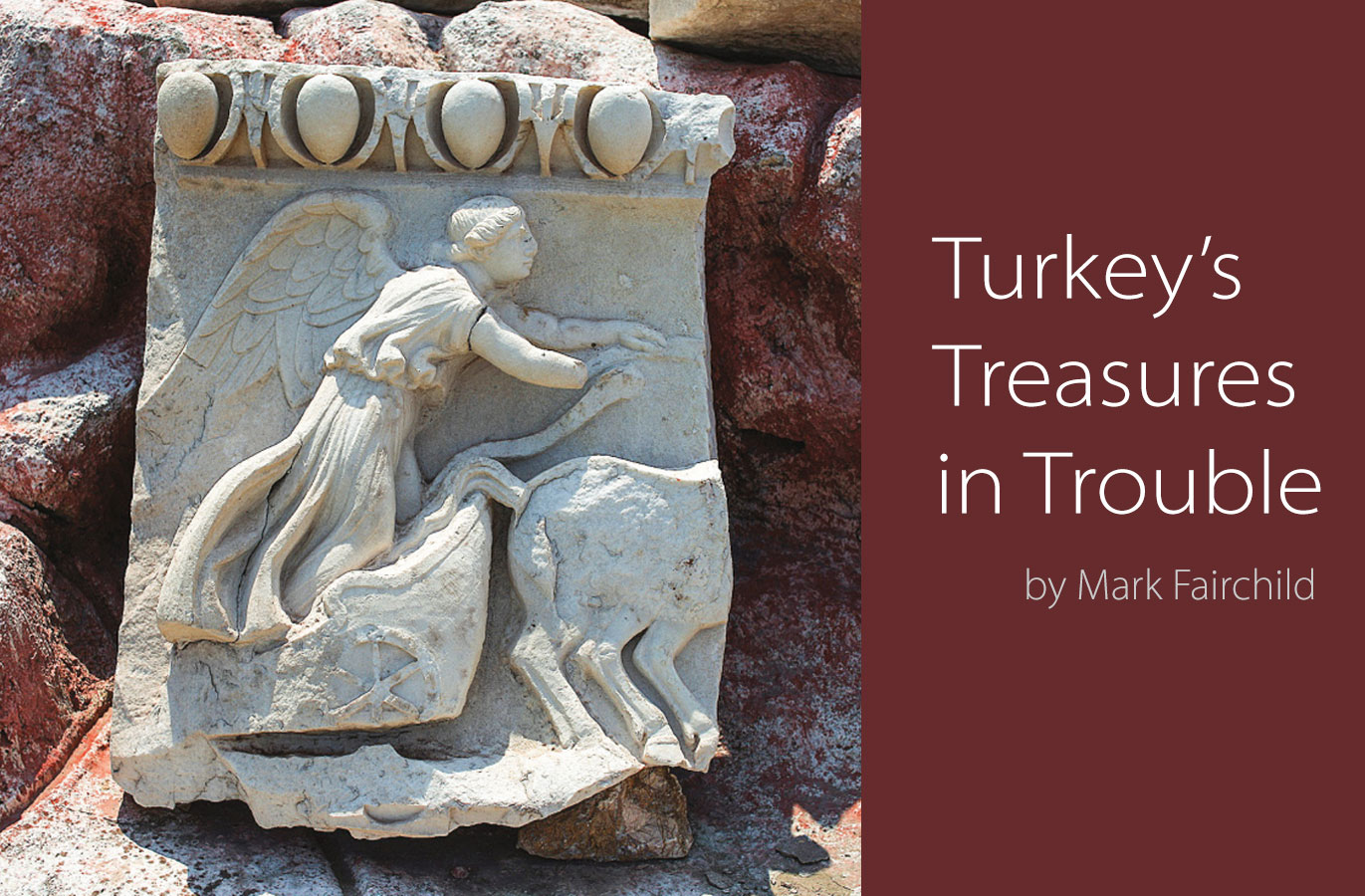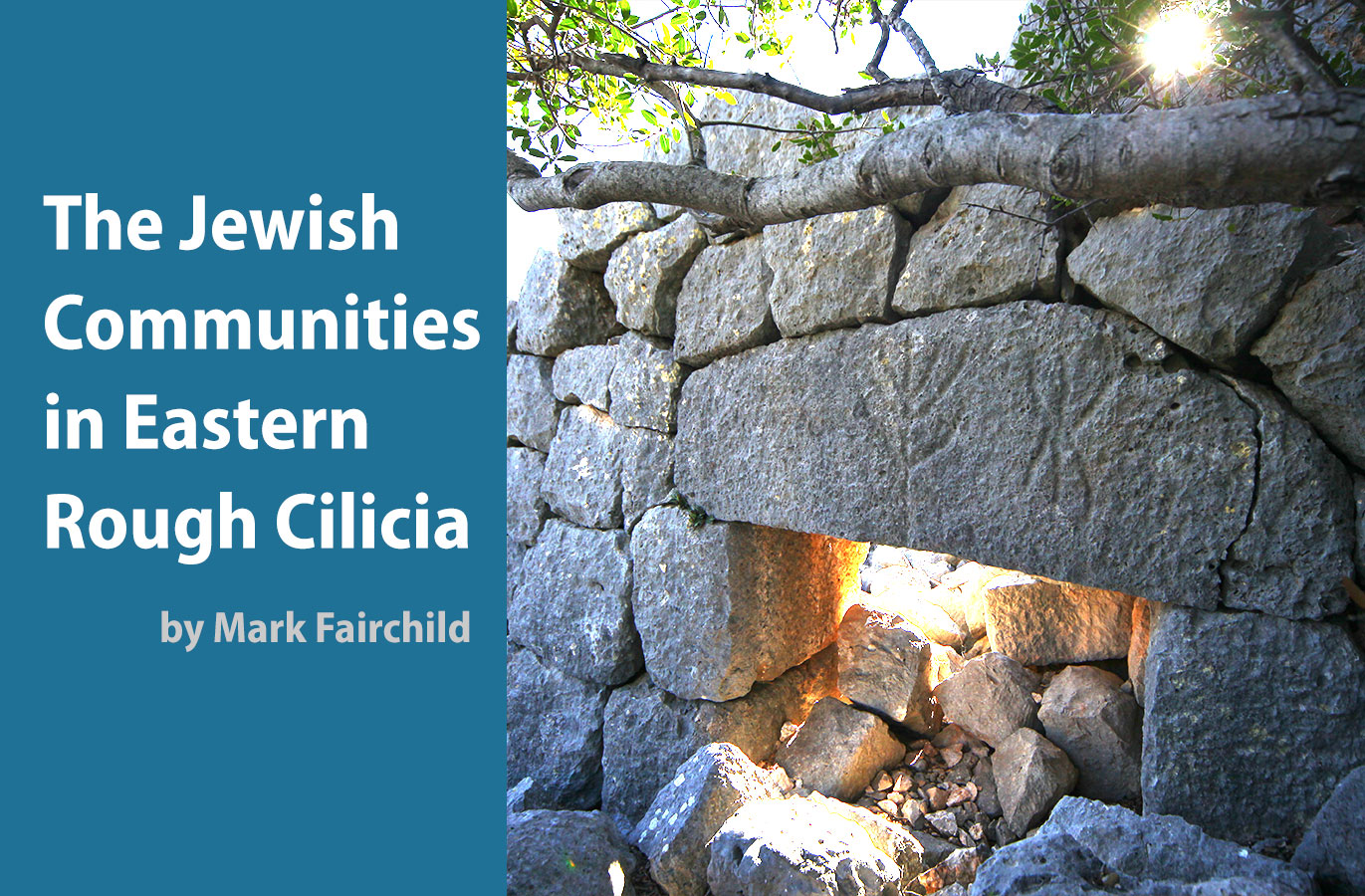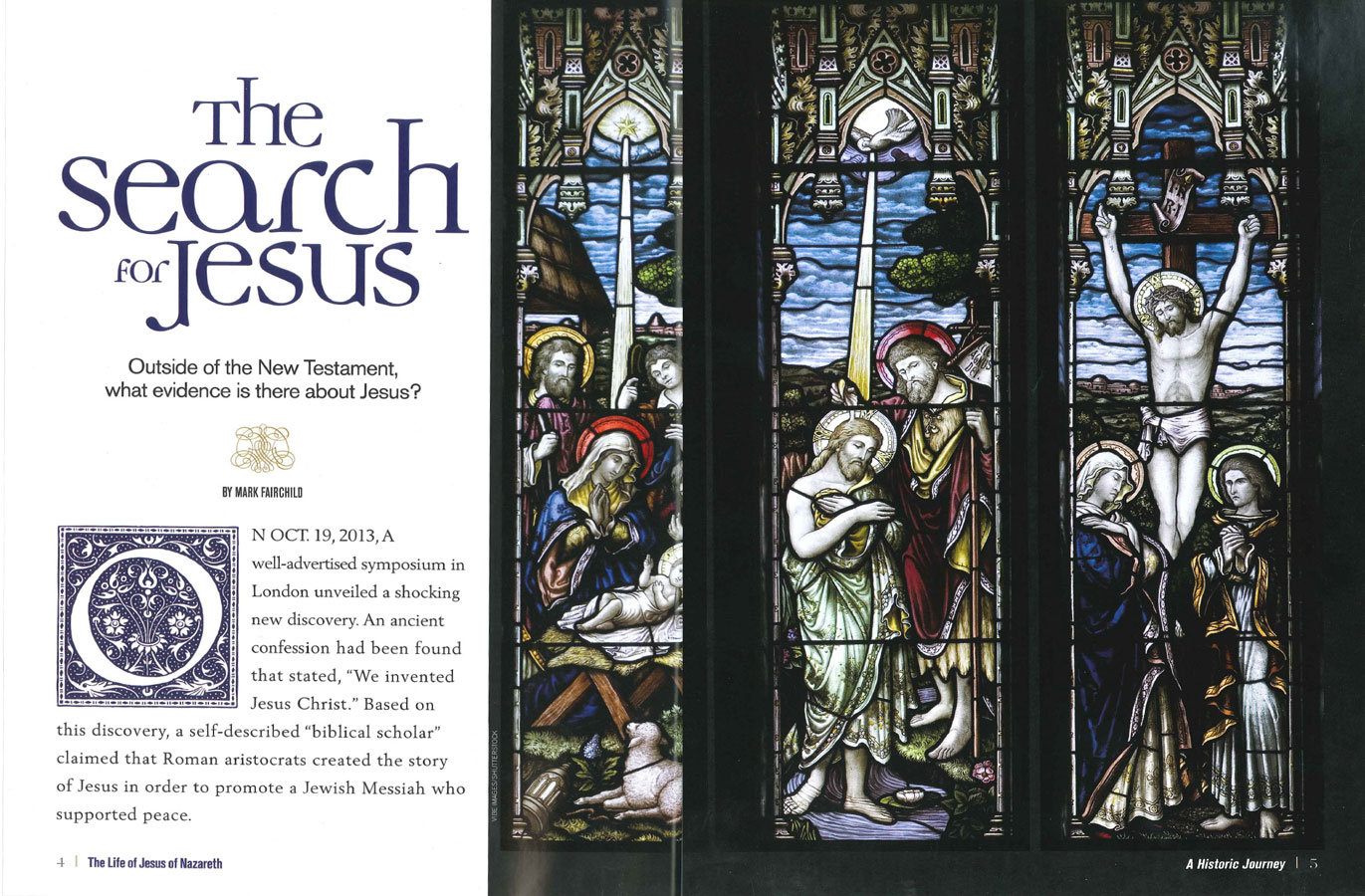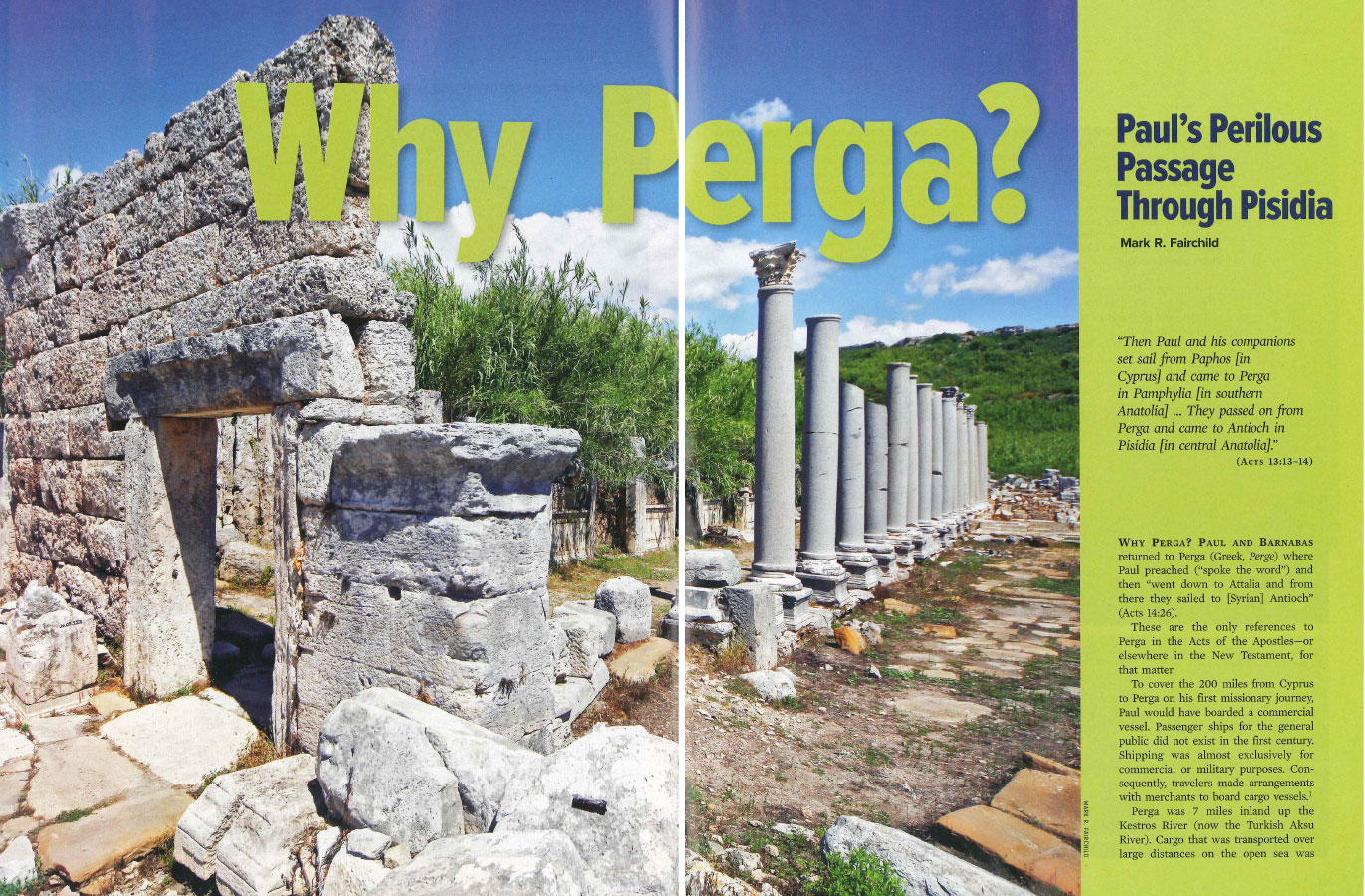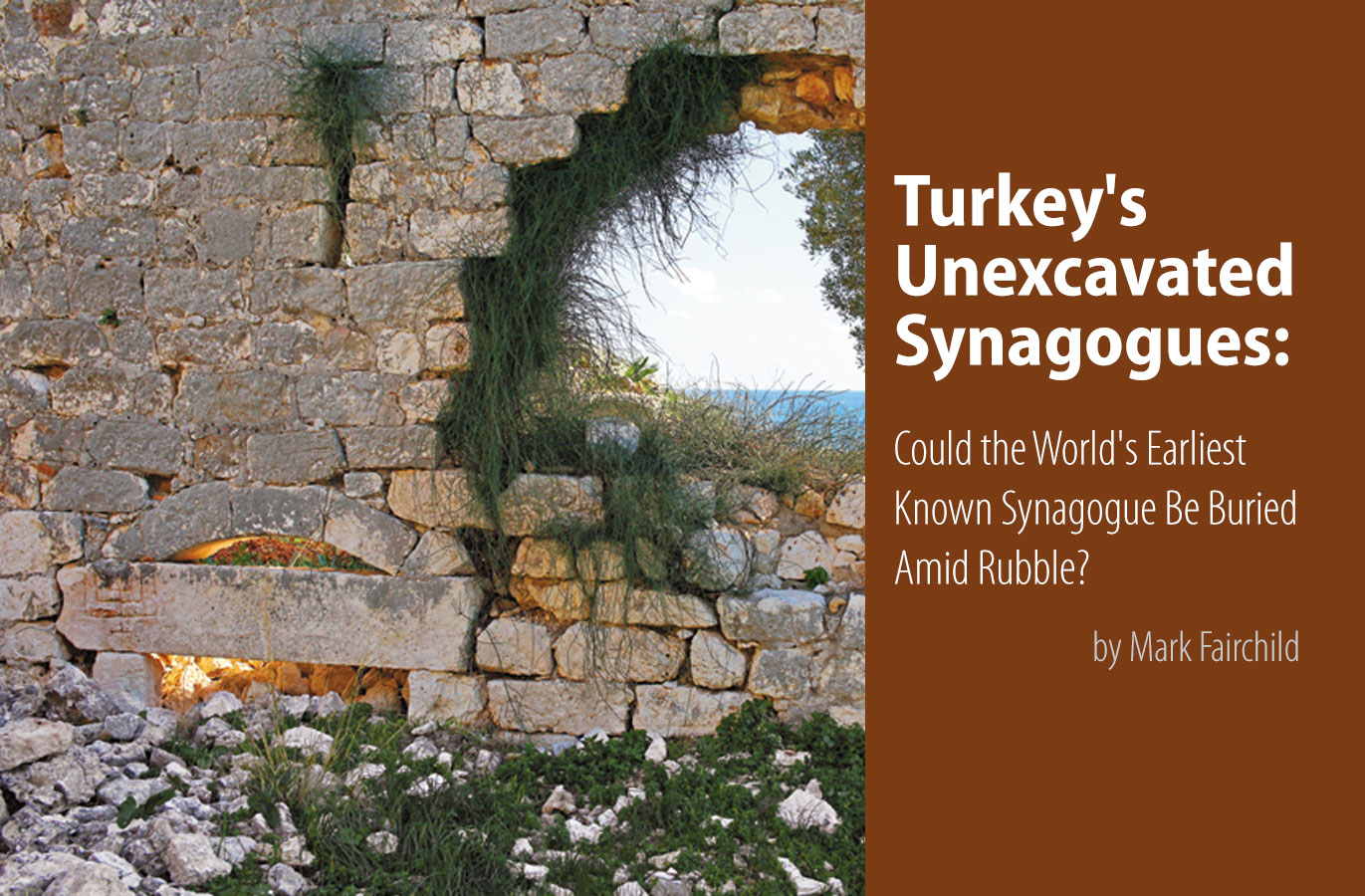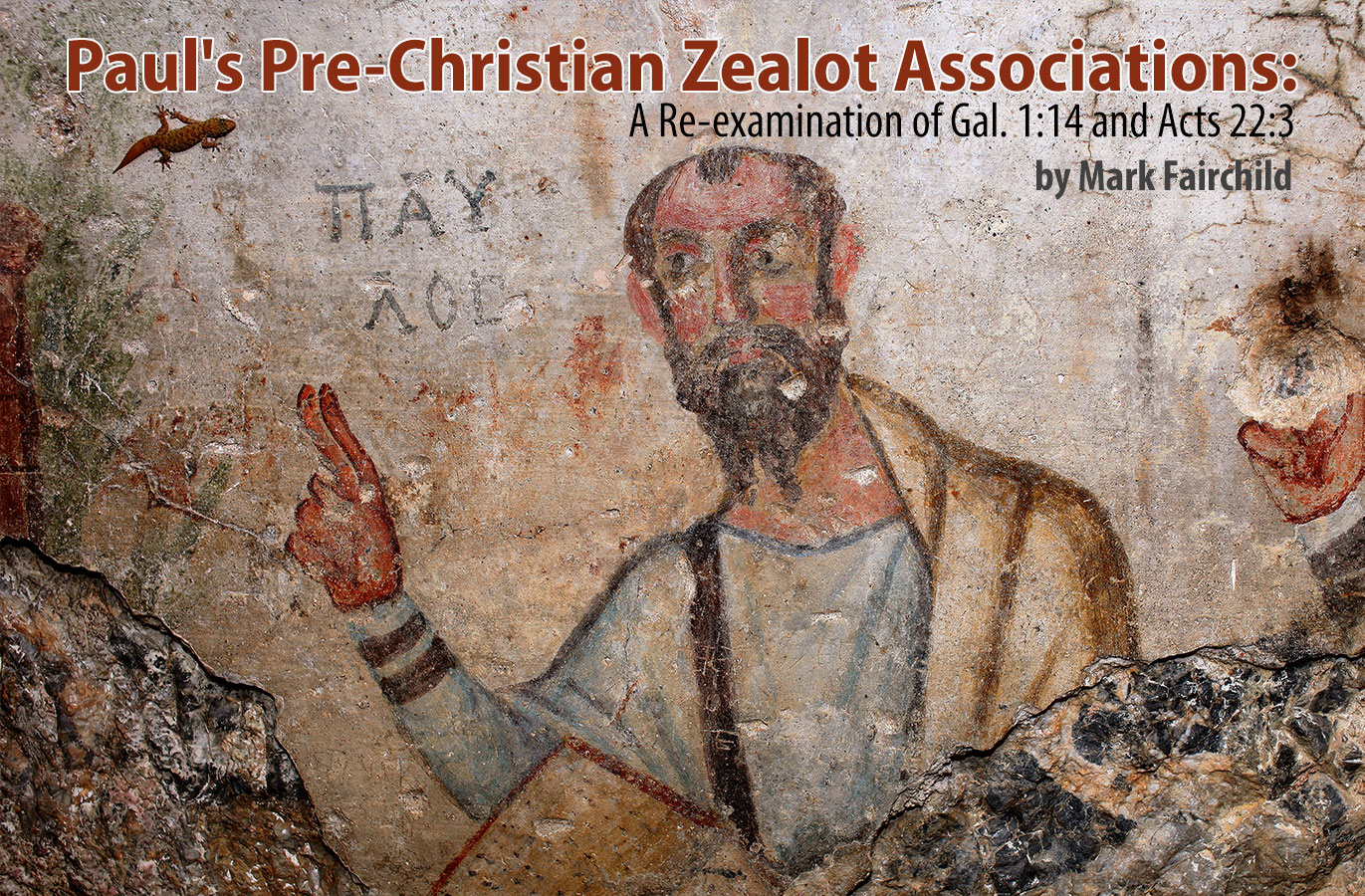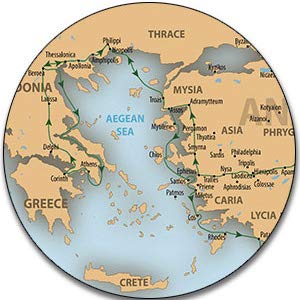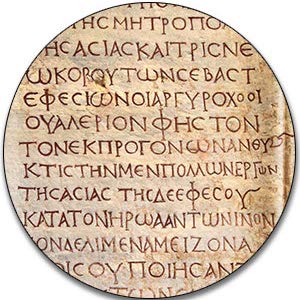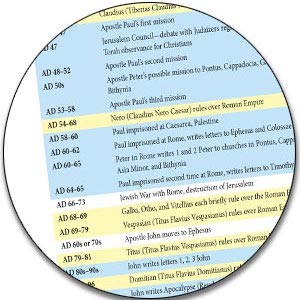
Mark R. Fairchild, Ph.D.
Professor & Chair Dept. Bible & Religion
Huntington University
Mark Fairchild grew up in the small town of Corry, Pennsylvania and earned several degrees (B.S., B.A., M.Div., M.Phil. and Ph.D.) from The Pennsylvania State University, Toccoa Falls College (GA), Asbury Theological Seminary (KY) and Drew University (NJ). Fairchild received an academic appointment at Huntington University and is currently serving as the Professor of Bible and Religion at the university. Professor Fairchild was twice asked to participate in research projects funded by the National Endowment for the Humanities and contributed to projects at Yeshiva University (NY) and the University of Chicago (IL). He has published several articles for academic dictionaries and journals. Fairchild’s Christian Origins in Ephesus and Asia Minor was first published in Istanbul (Arkeoloji ve Sanat, 2015) as a paperback. An expanded second edition (hardback) was published by Hendrickson Publishers in 2017. Fairchild is currently working on a volume dealing with St. Paul’s journeys to the remote and unknown villages and towns of Cilicia.
For the 2021-2022 academic year, Fairchild was chosen for a Fulbright Senior Research Scholar award. During that time, Fairchild will collaborate with scholars and archaeologists at Uludağ University in Bursa (Turkey). Research will involve work at the underwater basilica discovered at Iznik (ancient Nicea) as well as continuing research in the ancient sites of Cilicia.
Dr. Fairchild has traveled extensively in the biblical lands and has led dozens of Biblical tours for a variety of groups, including university and seminary professors, church groups, pastors, denominational leaders, business groups and academic student groups. Although he has traveled throughout the Mediterranean world, Fairchild specializes in the ancient cities, towns and villages of Anatolia (modern Turkey). His extensive collection of high resolution photographs (more than 400,000) from more than 500 ancient sites have been published in numerous monographs, journals and periodicals.
Dr. Fairchild has given numerous interviews to local, national and international media outlets regarding his research, travels, discoveries and experiences in Turkey and the Middle East.
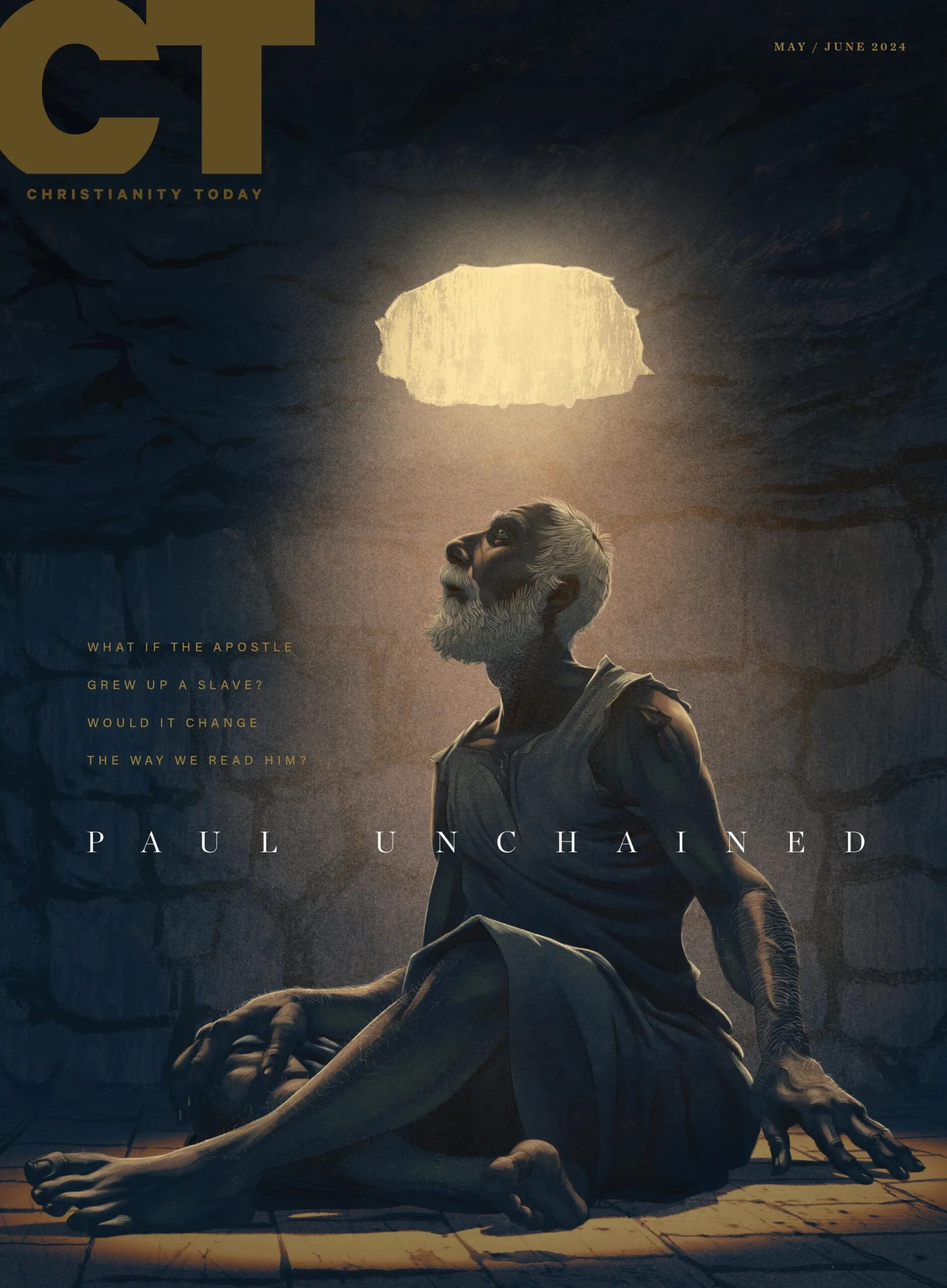
2024
“Paul Unchained” Christianity Today, May/June 2024 Vol. 68. Number 4.
What if the apostle grew up as a slave? Would it change the way we read him?
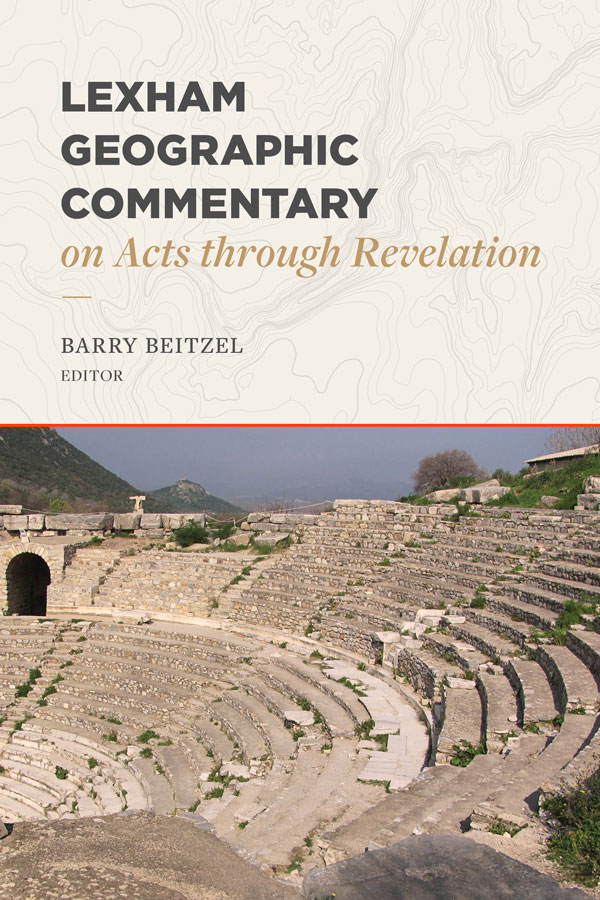
2019
Barnabas, John Mark and Their Early Ministry on Cyprus
“Barnabas, John Mark and Their Early Ministry on Cyprus,” Chapter 25 in Lexham Geographic Commentary on Acts through Revelation. Bellingham, WA: Lexham, 2019, 310-322.
In Acts 13 Paul, Barnabas and John Mark shared the Christian faith with the people of Cyprus. Later, Barnabas and John Mark split from Paul and returned to the island to continue their ministry among the people. The narrative in Acts mentioned nothing more of Barnabas and John Mark after this. An early apocryphal writing, The Acts of Barnabas offers readers an account of the later ministry on Cyprus, but the document was written centuries later and is historically suspect. What can be known about the early Christian faith on the island?

2019
Paul’s Early Ministry in Syria and Cilicia: The Silent Years
“Paul’s Early Ministry in Syria and Cilicia: The Silent Years,” Chapter 39 in Lexham Geographic Commentary on Acts through Revelation. Bellingham, WA: Lexham, 2019, 494-519.
After Paul’s conversion on the road to Damascus, his life was imperiled and he fled to his hometown of Tarsus. There, for the next seven to nine years, the apostle began to share his new faith with people in communities throughout Syria and Cilicia. This early mission of Paul’s was never mentioned in the book of Acts, yet it was here that Paul learned and developed a ministry to non-Jewish people (the Gentiles). Where did Paul go and how did he approach the task?
2018
“Nicea’s Underwater Basilica” Biblical Archaeology Review, vol. 44, no. 6 (November / December 2018), 30-37, 61.
In 2014 aerial photography revealed an underwater basilica in Lake Iznir at the site of ancient Nicea. Underwater excavations began in 2015. The excavations have revealed one of the earliest Byzantine churches, constructed shortly after the Edict of Milan in AD 311, allowing Christians to practice their faith without harassment. The location of the church, next to Constantine’s summer palace, leads us to believe that this church was the place where the famous Council of Nicea first met in AD 325.
2017
“Laodicea’s Lukewarm Legacy: Conflicts of Prosperity in an Ancient Christian City,” Biblical Archaeology Review, vol. 43, no.2 (March / April 2017), 30-39, 67-68.
When I first visited Laodicea in 2004, the site was unexcavated. Several architectural pieces were protruding out of the ground and the site was covered with tall grass and scrub brush. Since then, the site has exploded with the most ambitious archaeological excavation in Turkey. Today, the ancient city of Laodicea has come to life, revealing her past and clarifying her role in Biblical history.
2016
“Archaeological Views: Turkey’s Treasures in Trouble,” Biblical Archaeology Review, vol. 42, no.6 (November / December 2016), 24, 68.
Turkey has an untapped treasure comprised of almost a thousand ancient sites involving numerous civilizations dating back to the beginning of civilization. Most of these places have never been explored or excavated… Except by the local residents. Treasure hunters are ravaging these sites in hopes of finding coins and artifacts that can be sold on the black market. The damage being done to these places is tragic and the data that is lost detracts from what can be learned through a scientific dig.
2014
“The Jewish Communities in Eastern Rough Cilicia,” in The Menorot of Limyra and Judaism in Asia Minor: Archaeology, Visual Culture and Literature. Journal of Ancient Judaism, 5 (2014), 204-216, Photographic plates 285-288.
As the exploration of Turkey has increased over the last several years, it has become evident that the Jewish dispora brought numerous Jews to Anatolia. The region of Cilicia (Paul’s home province, located not far from Judea), was heavily populated by Jews during the Hellenistic, Roman and Byzantine periods. The rough topography of this region has inhibited exploration and research in this area, but more light is being shed on the Jewish presence in Rough Cilicia.
2014
“The Search for Jesus: Outside of the New Testament, What Evidence Is There About Jesus,” Special Project Publication of USA Today. Irvine, CA: I-5 Publishing, 2014.
At a time when the historicity of the Gospels and the life of Jesus is being questioned by folks in popular culture, it is important to look at the facts of what can be known about Jesus and the early Christian movement. There are sources outside of the New Testament that support some of the details that we read about in the Gospels. But, how far does this take us?
2013
“Why Perga? Paul’s Perilous Passage through Pisidia,” Biblical Archaeology Review, vol. 39, no.6 (November / December 2013), 52-59, 84.
The journey of Paul and Barnabas through the Taurus Mountains from Perga to Pisidian Antioch was an arduous and treacherous journey over the precipitous mountains that range across southern Anatolia. This trek was mentioned in only one verse of scripture – Acts 13:14. The journey would have covered at least 120 miles, depending upon the route taken, and would have involved at least two weeks. Along the way the disciples would have needed to find food, water, shelter and directions. How did they make it and what route did they pursue?
2012
“Turkey’s Unexcavated Synagogues: Could the World’s Earliest Known Synagogue Be Buried Amid Rubble?” Biblical Archaeology Review, vol. 38, no. 4 (July / August 2012), 34-41, 65.
Exploring the interior of Rough Cilicia in 2007 at an unknown ancient village known today as Çatıören I discovered a Jewish menorah inscribed upon the lintel of a building that can be dated to the Hellenistic period (200-50 BC). I have visited this site several times since then and have come to the conclusion that this building was one of the earliest synagogues ever discovered. Two inscriptions dated to the Hellenistic period found at the site confirm that a Jewish community once existed here.
1999
“Paul’s Pre-Christian Zealot Associations: A Re-examination of Gal. 1:14 and Acts 22:3.” New Testament Studies, vol. 45, 514-532.
We know very little about Paul’s early life. However, an examination of the scant evidence that exists leads us to the conclusion that Paul was a former Zealot. Paul says as much in Galatians 1:14 and additional evidence from the apostle’s writings as well as early Christian testimony confirms this association.
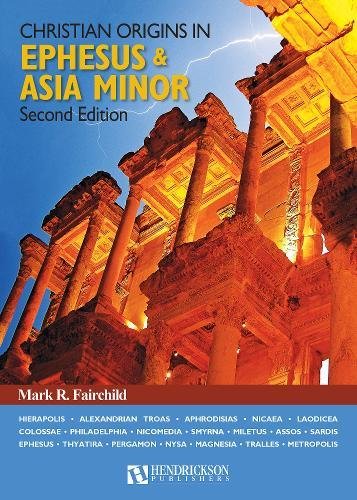
Christian Origins in Ephesus and Asia Minor
A second edition of Fairchild’s Christian Origins in Ephesus and Asia Minor has been published by Hendrickson Publishers and is available on Amazon: Click here to order
Dig Deeper into Key Places and People in the New Testament
From Priscilla and Aquila in Ephesus to Paul’s missionary journeys, dig deeper into 20 key Bible places!
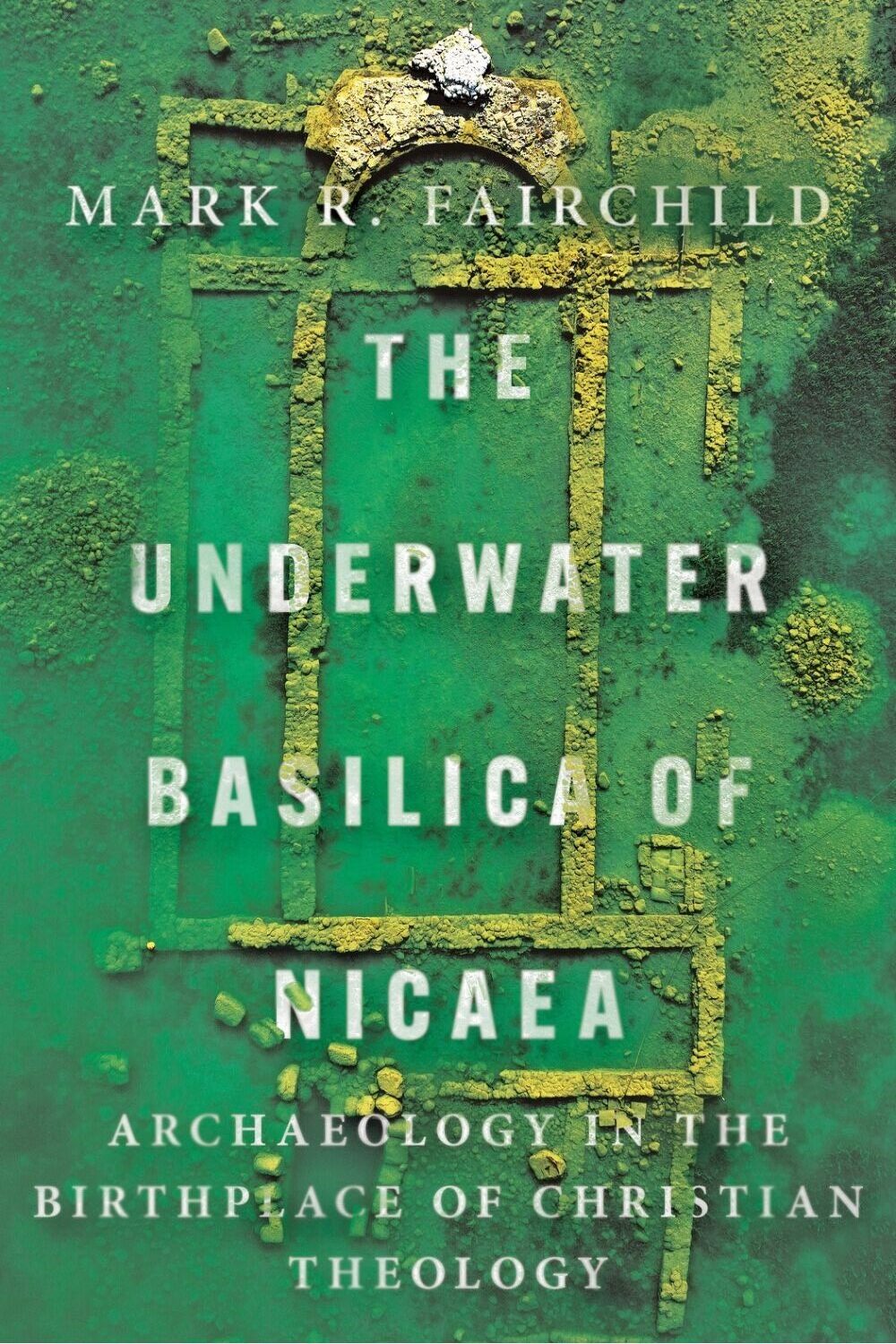
The Underwater Basilica of Nicaea
Archaeology in the Birthplace of Christian Theology
A first edition of Fairchild’s The Underwater Basilica of Nicaea has been published by InterVarsity Press (IVP) and is available on ivpress.com: Click here to order
A Firsthand Look at a Groundbreaking Archaeological Discovery
In 2014, aerial photography revealed a submerged structure beneath the waters of Lake Iznik, near the ancient city of Nicaea. The structure appeared to be in the shape of an ancient basilica church, with a nave, aisles, and an apse pointing to the east. The discovery was named one of the top ten archaeological discoveries in 2014 by the Archaeological Institute of America. Earlier excavations in ancient Nicaea have revealed fourteen Byzantine churches in the city, but none of them can be dated as early as the fourth century.
Biblical scholar and archaeologist Mark Fairchild’s work on the archaeological excavations in Turkey reveals what he argues is the likely location of the First Council of Nicaea. The Underwater Basilica of Nicaea includes:
• Beautiful images from the excavation
• Helpful maps from the dig site
• Fascinating insights for a location that could be the birthplace of Christian theology.
